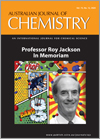
Australian Journal of Chemistry
Volume 73 Number 12 2020
Professor Roy Jackson In Memoriam
CHv73n12_FOProfessor William Roy Jackson AM, 27 February 1935 – 3 November 2019
The foreword to this special issue of the Journal dedicated to Professor William Roy Jackson describes his life and his legacy.
CHv73n12_OBProfessor W. Roy Jackson – A Brilliant Man and an Exemplary Supervisor
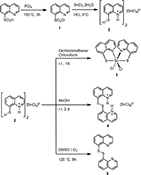
Bis(8-sulfanylquinolinium) hexachloridostannate(IV) undergoes variable reaction behaviour in different solvents to form cis-dichloridobis(8-quinolinethiolato)tin(IV), 8,8′-dithiodiquinolinium hexachloridostannate(IV), and diquinolinyl-8,8′-disulfide.
CH20005Vortex Fluidic Ethenolysis, Integrating a Rapid Quench of Ruthenium Olefin Metathesis Catalysts

Ethenolysis was investigated in a thin-film continuous reactor, the vortex fluidic device. The product distribution with several catalysts was examined for ethenolysis of renewable substrates such as methyl oleate. A novel olefin metathesis quenching method was also discovered in which N-acetyl cysteine chelates to the ruthenium centre and arrests turnover.

Investigations into the preparation of synthetically applicable sources of beryllium dialkyls, ‘BeR2’, have led to two lithium tetramethylberyllate compounds. Reactions of ‘BeR2’ with several β-diketimines, NacnacH, have yielded a series of β-diketiminato beryllium alkyl complexes, [(Nacnac)BeR], including the first chiral example of such a compound (see picture).
CH20138Continuous-Flow Photochemical Transformations of 1,4-Naphthoquinones and Phthalimides in a Concentrating Solar Trough Reactor


A series of photochemical transformations involving 1,4-naphthoquinones and phthalimides has been successfully conducted under continuous-flow conditions in a concentrating solar trough reactor. Compared with corresponding exposures to direct sunlight conducted in a solar float, flow operation generally gave superior conversions and subsequent yields.

An air- and moisture-tolerant method for the efficient high-yielding synthesis of a cationic chelated bis(N-heterocyclic carbene) palladium(II) methyl complex is described along with preliminary polymerisation results revealing an unexplored catalyst deactivation mechanism for this ligand class leading to unusually low catalyst activity.
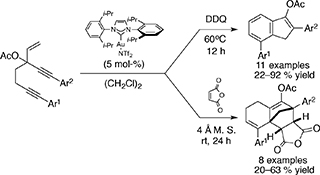
A synthetic method to prepare 1H-indenes and partially hydrogenated methanonaphtho[1,2-c]furan-1,3(4H)-diones from gold(I)-catalysed 1,4-enyne acetate cycloisomerisation and oxidation or Diels–Alder reaction with maleic anhydride is described. The proposed mechanism involves Rautenstrauch rearrangement/6-endo-dig cyclisation and oxidation to give the aromatic carbocycle or Diels–Alder reaction with maleic anhydride to afford the bridged furan product.

A simple, robust microwave and SnCl2 access to 3-dihydroquinazolinones is described.
CH20172Further, Small-Molecule Pyrolysis Products Derived from Chitin
 , Li-Juan Yu, Michelle L. Coote and Michael G. Gardiner
, Li-Juan Yu, Michelle L. Coote and Michael G. Gardiner

Two new, small molecule pyrolysis products, 18 and 19, derived from acid-treated chitin (4) are reported.
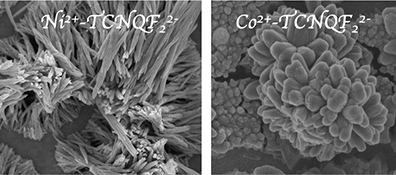
The coordination polymers, [M(TCNQF2)2(H2O)2] and [M(TCNQF2)] where M = Co or Ni have been synthesised and characterised using voltammetric and physicochemical methods. Comparisons with related M-TCNQFn, where n = 0, 1, 2, 4 are made.
CH20173Synthesis of a Novel Library of 1-Substituted Pyrido[1,2-a]benzimidazoles
 and Naresh Kumar
and Naresh Kumar 

The study reports the synthesis of libraries of novel pyrido[1,2-a]benzimidazoles. The substituents at the 1-position are linked by different heteroatoms for the first library of compounds and the second library consists of 2-benzyl-3-methyl-1-phenylbenzo[4,5]imidazo[1,2-a]pyridine-4-carbonitrile analogues. These compounds represent promising leads towards the development of a new class of anti-cancer agents.
CH20173 Abstract | CH20173 Full Text | CH20173PDF (781 KB) | CH20173Supplementary Material (1.7 MB) Open Access Article
CH20188Electronically Induced Steric Clash: Synthesis of NMe2-Modified β-Diketiminate-Supported Boron Difluoride Compounds


Electronic delocalization involving NMe2 groups and the central six-membered ring resulted in a steric clash between the NMe2 groups and Ar substituents. This steric clash was identified as the main reason for these ligand systems being able to stabilize only a BF2 fragment, while attempts to prepare heavy analogues resulted in product mixtures.
CH20169Bismuth(III) Thiophosphinates: Understanding How a Small Atomic Change Influences Antibacterial Activity and Mammalian Cell Viability
 and Philip C. Andrews
and Philip C. Andrews
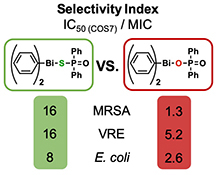
This study highlights the impact of structure on the biological activity and selectivity of bismuth(III) complexes. Changing one atom from O to S changes the biological profile. The selectivity for bacterial cells over mammalian cells displayed by [BiPh2(SP(=O)Ph2)] is much greater than for the analogous [BiPh2(OP(=O)Ph2)].
CH20168Structural Characteristics of Low-Aromaticity Marine and Lacustrine Oil Shales and their NaOH-HCl Kerogens Determined Using 13C NMR and XPS
 , Jameel S. Aljariri Alhesan, Thomas Gengenbach, Marc Marshall, Yi Fei, W. Roy Jackson and Alan L. Chaffee
, Jameel S. Aljariri Alhesan, Thomas Gengenbach, Marc Marshall, Yi Fei, W. Roy Jackson and Alan L. Chaffee 
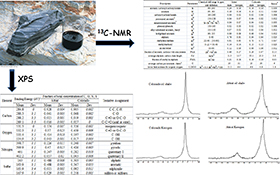
This paper studies the comparison between low-aromaticity marine (Attrat-Jordan) and lacustrine (Colorado-USA) oil shales and their kerogens. Kerogens were extracted using NaOH-HCl method. The characterisations were performed using elemental analysis, Rock Eval, 13C NMR, and XPS. This work reveals some differences in the organic structure between the two kerogens.
CH20197Preparation and Structures of Rare Earth 3-Benzoylpropanoates and 3-Phenylpropanoates
 , Cornelius Gaertner, Craig M. Forsyth
, Cornelius Gaertner, Craig M. Forsyth  , Anthony E. Somers
, Anthony E. Somers  and Peter C. Junk
and Peter C. Junk 
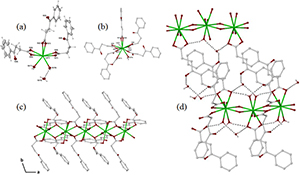
Rare earth (RE) complexes of 3-benzoylpropanoate (bp), [RE(bp)3(H2O)n] (RE = La, n = 2; RE = Y, Ce, Pr, Nd, Yb, n = 1) and 3-phenylpropanoate (pp), [RE(pp)3] (RE = Y, La, Ce, Nd, Yb), have been prepared by metathesis reactions and single-crystal X-ray diffraction shows that both RE bp and pp complexes favour formation of carboxylate-bridged 1-D coordination polymers in the solid state.
CH20176Photochemically Induced Solid State Dimerisation of Resveratrol Analogues: A Greener Synthetic Process
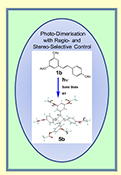
The benign synthesis of novel cyclobutane-based products is reported. Very good regio- and stereo-selectivity has been achieved by photochemical irradiation of derivatised resveratrol analogues in the solid state under ambient temperatures and pressures. The trans aryl cyclobutane isomers are generated in preference to the cis aryl isomers.
CH20193In Situ MOF-Templating of Rh Nanocatalysts under Reducing Conditions
 , Campbell J. Coghlan, Shaun C. Howard, Christopher D. Easton, Qinfen Gu, Jim Patel, Christopher J. Sumby, Danielle F. Kennedy and Christian J. Doonan
, Campbell J. Coghlan, Shaun C. Howard, Christopher D. Easton, Qinfen Gu, Jim Patel, Christopher J. Sumby, Danielle F. Kennedy and Christian J. Doonan
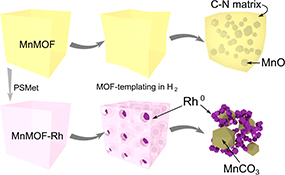
Manganese-based MOFs metalated with Rh were used as pre-catalysts for CO2 hydrogenation. The comparison of the MOF-derived catalyst with controls provide insights into the MOF-derivation process.
CH20193 Abstract | CH20193 Full Text | CH20193PDF (3.5 MB) | CH20193Supplementary Material (1.6 MB) Open Access Article
CH20189Chemical Nature of Spent Coffee Grounds and Husks

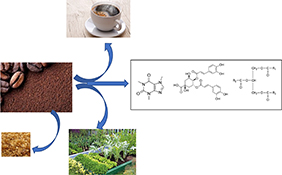
Characterisation of waste coffee husks and spent coffee grounds (SCGS) from Australian commercial outlets in terms of lipid, caffeine, and polyphenol content was undertaken. SCGs were also assessed for phytotoxicity effects, as a proxy for domestic reuse and as an indicator of use in an agricultural setting.

By exploiting the conversion of N-heterocyclic carbenes into the corresponding thioureas it has been possible to prepare and study a range of chiral and non-chiral Lewis base catalysts for such reactions. Although all thiourea catalysts were found to mediate halofunctionalisation reactions, they could not be achieved with enantioselectivity.

An NHC–Pd-based complex was successfully built and immobilised within the cavities of a Type I porous liquid. The catalytic ability of the resulting porous liquid system was investigated, using the Heck reaction as a model reaction, to confirm the successful immobilisation.



